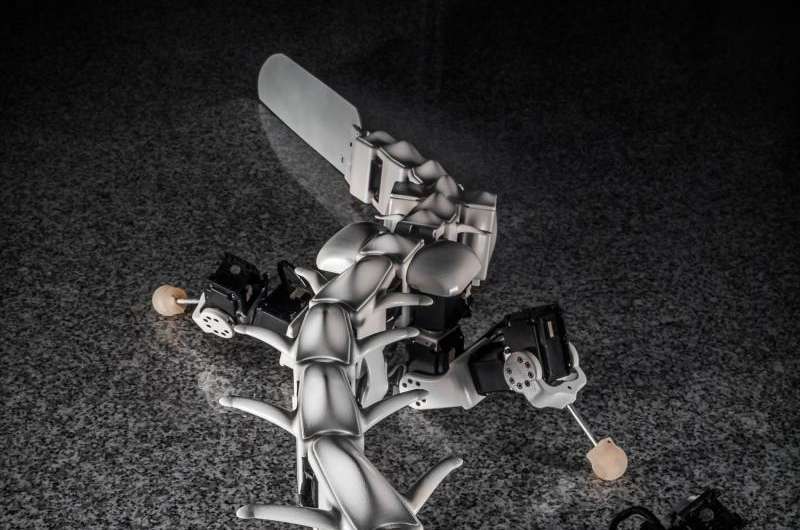"My name is Pleurobot. My design is based on the salamander skeleton." So begins the narration in a video devoted to a new biomimicry robot. It shows precise, muscular movements, very animal-like. It is hard to peel your eyes off the way the robot exercises control and coordination governing its joints, to get it where it needs to go.
Pleurobot's design has 27 degrees of freedom. The team behind it got to test more advanced mathematical models, and the robot has a rich set of motor skills.
The Biorobotics Laboratory (BioRob in short) is part of the Institute of Bioengineering in the School of Engineering at the EPFL. They work on movement control, sensorimotor coordination, and learning in animals and in robots. Professor Auke Ijspeert, Biorobotics Lab, EPFL, who is leading the developments, said Pleurobot is the most accurate robotic representation of an animal ever created.
Pleurobot fundamentally offers a window on research focused on salamanders. The team vigorously sought out a fundamental understanding of vertebrate motor control. They said that recent advances in cineradiography were made use of in their work.
"We recorded three-dimensional X-ray videos of salamanders, Pleurodeles waltl, walking on ground, walking underwater and swimming. Tracking up to 64 points on the animal's skeleton we were able to record three-dimensional movements of bones in great detail."
They then took what they knew to re-create that information in robotic form.
Why the salamander as the target of mimicry? Salamander is an "old" and interesting animal. It is interesting because of its morphology and body shape, ideal for scientists. Pleurobot is useful for those (1) interested in the evolutionary hypotheses in studying evolution from swimming to walking and for (2) neuroscientjsts interested in knowing more about how control signals are received by the human spinal cord. This could possibly lead to the development of new therapies.
"Our aim is to demonstrate how Pleurobot's design methodology, along with recent methods for robotic production, may yield fast and cost effective platforms able to become a physical interface for: i) neuroscientists, ii) biomechanists, functional morphologists and paleontologists and iii) roboticists."
Reuters quoted Ijspeert: "By decoding this primitive animal what we hope is to also contribute to the understanding of how mammals, including humans, walk. And therefore understanding input and output relationships of the spinal cord." What's next: The team is working on a smaller model based on the Plueurobot, said the Reuters report, that can operate in land and water and can navigate rough terrain.
More information: biorob.epfl.ch/pleurobot
© 2015 Tech Xplore
























